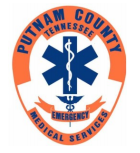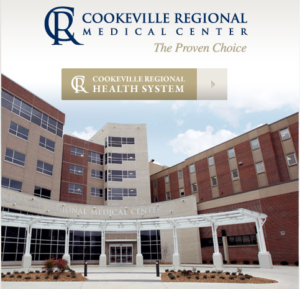CRMC and Putnam County EMS See Improvements In Time To Life-saving Treatment For Patients With Sepsis
COOKEVILLE, TENN – Local healthcare professionals are working to combat a long-term problem with a new partnership. Cookeville Regional Medical Center and Putnam County EMS recently partnered to combat Sepsis, the body’s overwhelming response to infection.
According to Dr. Sullivan Smith, Putnam County EMS’ medical director, Sepsis is a serious concern. “We see patients coming into the EMS system and the emergency department with infections that are untreated or just aren’t going away. When the body can no longer perform its normal functions, because it is using all its resources to fight the infection, patients become critically-ill in a short period of time,” Smith explained.
The Center for Disease Control (CDC) reports that 1.5 million people develop sepsis each year, and more than 250,000 Americans die as a result. Local healthcare officials emphasize that sepsis is a time-sensitive disease process, but it is often correctable if caught in time.
The local sepsis protocol uses a familiar naming scheme, called Code Sepsis. “We have strong relationships with CRMC and our continuous drive to improve patient outcomes, with programs like our Code STEMI (for heart attack patients) and Code Stroke (for acute stroke patients). This is a great new emphasis on something that affects many patients in our area,” stated Darren Ford, deputy chief of Putnam County EMS.
With the Code Sepsis protocol, EMS providers are taking additional steps in the collection of blood cultures, as well as administration of antibiotics to the patient before they ever reach the hospital. Angela Craig, clinical nurse specialist in CRMC’s ICU and Sepsis Team Chair for the medical center explained how the new procedures in the field will affect patient outcomes directly. “Blood cultures allow us to check the patient’s blood for infection and since it takes time to allow those tests to develop, having them drawn by EMS, and antibiotics given immediately in the field can have a significant impact on the patient surviving,” she explained.
As with all advanced treatment protocols, officials are taking extra care to track the progress of the new Code Sepsis. Over the first three months of the new treatment protocol, nineteen patients have been treated as Code Sepsis patients. Three of the patients met the criteria to have antibiotics started before ever arriving at the hospital. Deputy Chief Ford explained the numbers, “Our crews have worked really hard at identifying these patients early in their assessments and starting the treatment immediately. With having three patients who had antibiotics started during the transport phase of their care, in just the first three months, we are confident that many more patients will see improved outcomes as we
proceed.”
The Code Sepsis protocol is something EMS crews have been working toward for several months. EMTs and paramedics began training in the fall of 2018, with training conducted by CRMC’s laboratory services and infection control specialists. “We wanted to make sure that we understood what EMS was up
against by performing the collection of cultures in the field and be sure we gave them all the tips and tools they needed to be successful. We knew there would be challenges to performing a sterile
procedure in the back of a unit in the field, but EMS crews immediately jumped onboard and started practicing their skills to take care of our patients,” Craig commented.
According to Dr. Smith, patients can impact their own outcomes by being familiar with the symptoms and seeking medical care early on. “We see many patients who try to fight infections as long as they can without seeking medical care, but then the infection takes over and causes the condition of sepsis. If we can recognize that things are getting worse, sooner, and get patients to advanced care, many of these infections are treatable and patients will have great outcomes,” he explained.
Signs and symptoms of sepsis include:
• Confusion or disorientation
• Shortness of breath
• High heart rate
• Fever, shivering, or feeling very cold
• Extreme pain or discomfort
• Clammy or sweaty skin
“If patients or their families notice the signs or symptoms of sepsis, we strongly urge them to get to medical care the same day,” continued Smith.
EMS officials state they will continue to track the progress of the new protocol and work with CRMC to continue improving outcomes. “This is the first step in the process for us. We are going to continue working closely with CRMC to make sure that we are improving every step of the way, to be sure we are always doing what is best for our patients,” concluded Deputy Chief Ford.
For more information on sepsis, visit the CDC website at www.cdc.gov/sepsis for the Get Ahead of Sepsis campaign.


